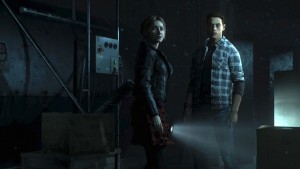 My parents came out to visit last weekend, and while they were here, my mom and I played through the first few hours of Until Dawn together. As we played, I was reminded of the fact that, growing up (and still), I often bonded with my mom over horror movies, and it was often at this time of year that we would watch and rewatch films like Night of the Living Dead or The Shining or Alien together. Indeed, I have my mom to thank for my love of horror movies, and it was through our collaborative playing of Until Dawn that she and I have been able to extend this shared love of horror to the medium of video games now as well.
My parents came out to visit last weekend, and while they were here, my mom and I played through the first few hours of Until Dawn together. As we played, I was reminded of the fact that, growing up (and still), I often bonded with my mom over horror movies, and it was often at this time of year that we would watch and rewatch films like Night of the Living Dead or The Shining or Alien together. Indeed, I have my mom to thank for my love of horror movies, and it was through our collaborative playing of Until Dawn that she and I have been able to extend this shared love of horror to the medium of video games now as well.
So, since I’ve been thinking a lot about my mom and horror lately, I’ve also found my mind wandering to thinking about moms in horror and the manner in which motherhood is often problematically rendered in the genre. Indeed, films like Scream, Rosemary’s Baby, Carrie, and Friday the 13th seem to reveal that, in the horror genre, motherhood is often constructed as a binary, affording mothers only one of two roles—either that of a victim or that of a monster—and it would seem that horror video games, too, often perpetuate such characterizations. Barbara Creed, of course, discusses such constructions of monstrous motherhood in film in The Monstrous-Feminine: Film, Feminism, Psychoanalysis, and I’ve touched on the construction of motherhood in games previously as well, but in the spirit of the Halloween season, I want to explore such constructions in games a bit further, and I want to specifically do so through the exploration of two games (games that I’ve discussed before but that I seek to expand on, now, in more detail)—namely, Among the Sleep and Alien: Isolation.
(Spoilers for these two games to follow.)
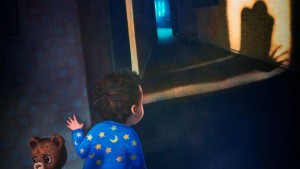 In Among the Sleep, we play the character of a toddler, who has just turned two years old and who lives alone with her mother. The game opens with a birthday celebration of sorts, a celebration in the kitchen between the mother and child. For most of the game, the mother seems to be framed as the prototypical “good” mother (albeit a single one), one who wants cakes to be perfect and who kisses her child good night. Her good mothering also seems to be predicated on the norms of white middle-class culture (she is a white woman living in a well-apportioned two-story home), revealing the race- and class-based nature of the manner in which “good” motherhood often comes to be constructed. The sudden disappearance in the middle of the night of this good mother, then, renders her a helpless, blameless victim, one who needs to be saved at all costs.
In Among the Sleep, we play the character of a toddler, who has just turned two years old and who lives alone with her mother. The game opens with a birthday celebration of sorts, a celebration in the kitchen between the mother and child. For most of the game, the mother seems to be framed as the prototypical “good” mother (albeit a single one), one who wants cakes to be perfect and who kisses her child good night. Her good mothering also seems to be predicated on the norms of white middle-class culture (she is a white woman living in a well-apportioned two-story home), revealing the race- and class-based nature of the manner in which “good” motherhood often comes to be constructed. The sudden disappearance in the middle of the night of this good mother, then, renders her a helpless, blameless victim, one who needs to be saved at all costs.
But when we do find the mother at the end of the game, we come to realize that all is not as it seems and the mother is not necessarily the helpless victim that she was initially made out to be. Rather, the mother is revealed to be an abusive alcoholic who has taken the child away from her father and who has been the perpetrator of the violence that the toddler has endured throughout the game (more on the manner in which this trauma is manifested shortly). As such, the manner in which the mother is represented shifts—from that of the good mother to the bad mother. She is no longer the good mother who bakes cakes, doles out kisses, and sings lullabies but the bad mother who drinks too much, abuses her child, and takes the child away from the father. And the fact that she does not want the father to be involved in raising the child, the fact that she seeks to operate outside the patriarchal and heteronormative construction of the nuclear family, frames her as being all the worse.
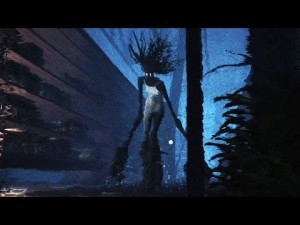 Further, the game’s depiction of monstrous motherhood is highlighted by the two monstrous figures that pursue the child throughout the game. The first monster, a banshee-like figure clad in a torn and dirty nightgown, drinks from a bucket and shrieks as she chases after the child. The second is a disembodied trench coat with glowing eyes that attacks the child every time the child knocks over a glass bottle. Both these monsters—through the banshee’s constant drinking and the trench coat’s sudden appearance at the sound of breaking glass—seem to represent the mother’s alcohol-induced violence; that is to say, these monstrous figures seem to be the way the child perceives her mother when she becomes violent. They seem to be the manner in which the child works through the trauma. But this traumatic rendering of the mother as something else—something monstrous—during her states of aggression is hinged on a binary. In other words, she is either a good mother or a bad mother and never both at the same time, which is a problematic concept to work with, as both types of motherhood are inexorably linked within the body of the mother. Such a binary, then, oversimplifies the manner in which motherhood might be understood. Of course, it is important to remember that we are dealing with a character who is two years old, and, thus, such an oversimplification of identity would make sense when thinking about the manner in which a toddler might comprehend trauma. However, it is also important to remember that those of us playing the game are not toddlers, which is why it is important to think through these complexities regarding the representations of motherhood and monstrosity in more critical ways.
Further, the game’s depiction of monstrous motherhood is highlighted by the two monstrous figures that pursue the child throughout the game. The first monster, a banshee-like figure clad in a torn and dirty nightgown, drinks from a bucket and shrieks as she chases after the child. The second is a disembodied trench coat with glowing eyes that attacks the child every time the child knocks over a glass bottle. Both these monsters—through the banshee’s constant drinking and the trench coat’s sudden appearance at the sound of breaking glass—seem to represent the mother’s alcohol-induced violence; that is to say, these monstrous figures seem to be the way the child perceives her mother when she becomes violent. They seem to be the manner in which the child works through the trauma. But this traumatic rendering of the mother as something else—something monstrous—during her states of aggression is hinged on a binary. In other words, she is either a good mother or a bad mother and never both at the same time, which is a problematic concept to work with, as both types of motherhood are inexorably linked within the body of the mother. Such a binary, then, oversimplifies the manner in which motherhood might be understood. Of course, it is important to remember that we are dealing with a character who is two years old, and, thus, such an oversimplification of identity would make sense when thinking about the manner in which a toddler might comprehend trauma. However, it is also important to remember that those of us playing the game are not toddlers, which is why it is important to think through these complexities regarding the representations of motherhood and monstrosity in more critical ways.
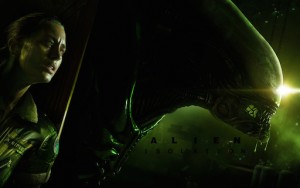 Alien: Isolation, being set during the period of time between Alien and Aliens in which Ellen Ripley is still lost in space, turns to Amanda Ripley, Ellen’s now grown daughter, and her search to find information regarding the fact that her mother has been missing for the past fifteen years. This search leads her to Sevastopol Station, which she finds in disarray—the crew has been reduced to small, paranoid, and violent groups of scavengers, the android workforce abruptly kills people on sight, and (most terrifyingly) the towering Xenomorph of the Alien franchise prowls the broken-down halls of the deteriorating station. Finding herself in the midst of such an ominous and chaotic environment, Amanda’s main goal is simply to stay alive—to avoid being shot by a scavenger, strangled by an android, or impaled by an alien—and to escape the space station.
Alien: Isolation, being set during the period of time between Alien and Aliens in which Ellen Ripley is still lost in space, turns to Amanda Ripley, Ellen’s now grown daughter, and her search to find information regarding the fact that her mother has been missing for the past fifteen years. This search leads her to Sevastopol Station, which she finds in disarray—the crew has been reduced to small, paranoid, and violent groups of scavengers, the android workforce abruptly kills people on sight, and (most terrifyingly) the towering Xenomorph of the Alien franchise prowls the broken-down halls of the deteriorating station. Finding herself in the midst of such an ominous and chaotic environment, Amanda’s main goal is simply to stay alive—to avoid being shot by a scavenger, strangled by an android, or impaled by an alien—and to escape the space station.
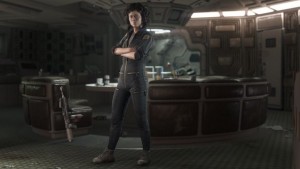 But it is not just about survival—or, at least, it does not start off that way, for Amanda is motivated by the need to find her mother, to reestablish the mother/daughter bond between her and Ellen. But this is a goal that Amanda ultimately cannot achieve, for all she finds on Sevastopol Station is a message that her mother recorded just after she escaped from the Nostromo: “Added report, personal message. This is for my daughter. Hi Amanda. I’m recording this for you, my sweetheart. And I hope you get to hear it one day…I needed to protect you…Don’t worry. Don’t worry about me. I’m sure I’ll see you very soon.”
But it is not just about survival—or, at least, it does not start off that way, for Amanda is motivated by the need to find her mother, to reestablish the mother/daughter bond between her and Ellen. But this is a goal that Amanda ultimately cannot achieve, for all she finds on Sevastopol Station is a message that her mother recorded just after she escaped from the Nostromo: “Added report, personal message. This is for my daughter. Hi Amanda. I’m recording this for you, my sweetheart. And I hope you get to hear it one day…I needed to protect you…Don’t worry. Don’t worry about me. I’m sure I’ll see you very soon.”
The result of this message is manifold. First, it transforms the motivation behind Ellen’s actions in the first film; instead of destroying the Alien (and the Nostromo) in order to protect herself, Alien: Isolation makes it seem as if she does so, rather, to protect her daughter, thereby (re)writing Ellen (as its sequel Aliens does) as a figure who is driven to do what she does solely due to her role as mother. And further, the game turns Ellen into a bad mother—one who has abandoned her daughter and who has not kept her promises. As such, the game implies that the fact that Ellen has abandoned Amanda has put Amanda in grave danger; the fact that Amanda must go looking for her mother has caused Amanda to become a victim of the same Alien threat her mother faced and has caused Amanda to find herself in a life-or-death situation in which she must struggle to survive. Ellen’s bad mothering, then, has put Amanda’s life at risk. But it also seems important to note that Amanda is not the only victim here, for Alien: Isolation seems to characterize Ellen as such as well; indeed, the mere fact that Amanda embarks on this search for her missing mother renders Ellen a victim–one lost in space and one whose daughter hopes to save.
Unfortunately, based on Alien:Isolation and Among the Sleep’s depiction of fraught mother/child relationships, it would seem that these texts can only conceive of two forms of possible existence for mothers—mothers can either be “good” mothers who adhere to conservative ideals of “true motherhood” by prioritizing their maternal roles or are “bad” mothers who abandon their children and place them in danger. In these two texts, motherhood becomes binaristically constructed between the two poles of good mothering and bad mothering, with no other options for maternal identity made available. These binaries serve to institutionalize mother-blaming, in which the bad mother functions as a scapegoat.
And, it seems to me, moms deserve better representation than all this.

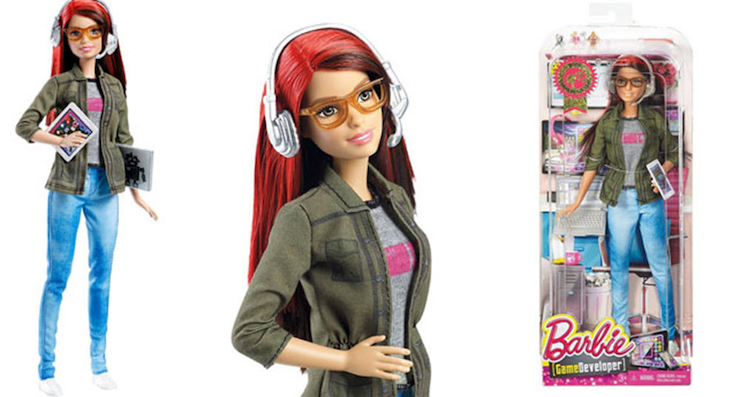
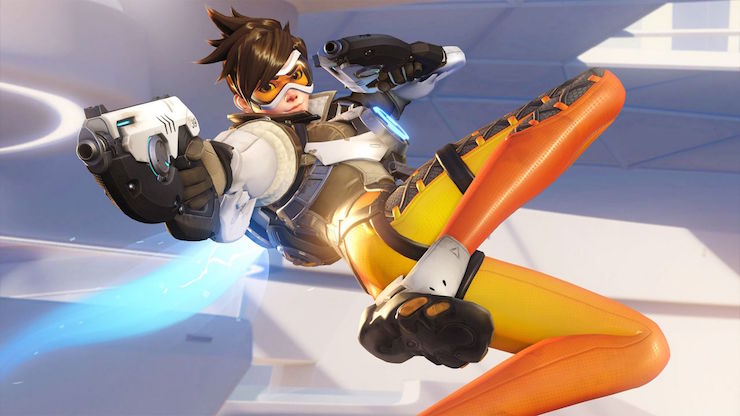


3 thoughts on “Mommy Issues: “Bad” Mothers and the Horror Genre”
I’ve not played the alien games but from what I know of the films is not the alien also a mother? Almost Ellen’s shadow in the way you talk about ‘Isolation’. If you don’t mind me being a bit psychoanalytic about it: the aliens presence seems to emphasise Ellen’s absence, or rather fills it in with fear. It seems to function similarly to the monstrous mother-spectres in Among the Sleep.
Yes, absolutely, such a great point! We definitely do see another monstrous mother figure in the Alien Queen of Aliens, and I think your connecting this figure to those we see in Among the Sleep is so important. I especially appreciate your noting the intersection of fear and absence, here, and the manner in which this intersection further contributes to the constructions of “bad” motherhood we see in these texts. And a fun fact: there’s a book called Alien Woman: The Making of Lt. Ellen Ripley (by Ximena Gallardo C. and C. Jason Smith) that I think does a really great job of examining the role of the Alien Queen in the franchise. It’s a fun, fascinating read!
Oh thanks. I will check that book out. It sounds rather fascinating.